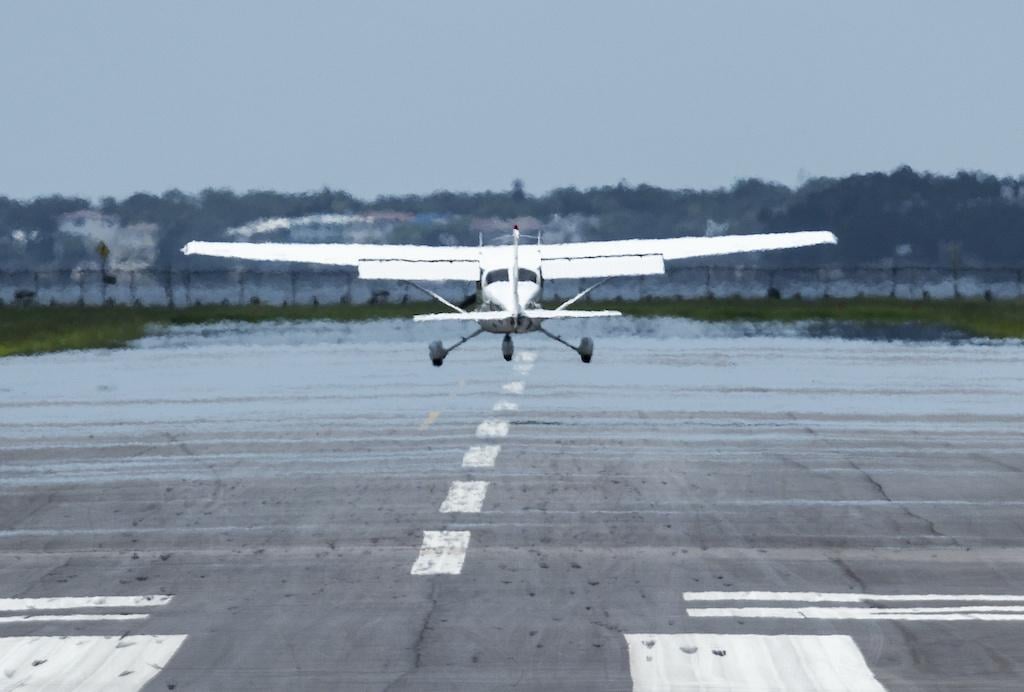
This is the second part of a three-part article series on the effects of climate change. The first part discusses the impact of rising temperatures on aircraft range and payload.
The physical risks to aviation’s infrastructure include damage from water (flooding, severe storms, sea level rise); damage resulting from temperature changes (runway buckling, material deformation); and impacts to cooling needs, according to the Transportation Research Board’s report Potential Impacts of Climate Change on U.S. Transportation. Ulku Ozeren, Istanbul Airport’s director of environmental and sustainability, is also concerned about changes to flora and fauna (leading to invasive species) and security risks (threats to life and safety from storms, lightning and security scanner interruption).
More frequent periods of extremely high temperatures are already placing added stress on airport runways and causing runway buckling. During extreme heat, pavement surfaces can crack due to thermal expansion. On an exceptionally hot day, the crack can expand and ultimately buckle the pavement if there is not enough room for expansion. This occurred in July 2018 at Hannover’s airport in Germany. Flight operations were halted when the pavement buckled due to excessive temperatures. The closure hit during the busy summer holiday period, causing some passengers to spend the night at the airport.
A Hawker Beechcraft Premier sustained damage at a U.S. Midwestern airport when the left main landing gear struck a section of separated pavement, destroying the tire and part of the landing gear structure. Shortly thereafter on July 5, 2012, the FAA sent “Airport Certification Information Bulletin” (ACIB) 11-13 to Part 139 airport certificate holders advising them to remain cognizant of the damage to airport surfaces during periods of high temperatures. The bulletin reminded certificate holders that unusual meteorological conditions should be followed by extra inspections of paved areas to check for pavement blow-ups and debris that could damage aircraft or cause a loss of direction control. The warning specifically applied to Part 139 air carrier certified airports, but it applies to any airport experiencing sustained high temperatures.
Runways are designed with the local climate in mind, accounting for temperatures and rainfall. Global climate change will lead to temperature increases far beyond the original design specifications. For instance, in the Middle East, expansion joints in concrete are designed for high temperatures of up to 60 deg C. However, runway infrastructure in many other parts of the world are designed with frost protection and heavy precipitation as primary threats. Excessive heat and changes in precipitation have an immense effect on clay-rich soils under pavement, causing shrinking or expansion resulting in deep wide cracks in the soil, which will result in significant damage to an airport’s smooth paved surfaces as well as rupturing buried infrastructure such as power, sewer and water lines.
Energy consumption will increase to provide additional cooling for airport terminals, FBOs, maintenance hangars and aircraft on the ramp. This in turn places increased pressure on local utilities that provide water and power. It is questionable that utility lines were built to perform under the demands for extra power during excessive heat. This is evidenced frequently in the U.S. when power providers ask customers to curtail their power consumption during high heat periods because of the stress on the power grid.
Even airports near the Arctic Circle will need to be concerned about their summer time cooling needs. Olav Mosvold Larsen and Kristin Fjellheim of Avinor (the Norwegian airport operator) expressed concern about the cooling capacity of the server rooms at some of the northernmost airports to withstand future forecasted summer high temperatures. Not only did they determine that the cooling needs in the future will be significantly higher, but also that the placement of critical equipment for airport operations needed to be reconsidered. For example, the electrical supply to navigation equipment at some of Norway’s low-lying airports is placed on the floor in their shelters. This places the equipment at risk from flooding. (“Adapting Airports to a New Climate”, ICAO 2016 report).
Workers on the ramp who directly endure the sometimes unbearable heat radiated from hot ramp surfaces will suffer more heat-related illnesses, including heat exhaustion and heat stroke according to the U.S. Army Public Health Center. More attention to ground personnel safety and performance will be required.
The final chapter of this article will discuss impacts on permafrost and freeze-thaw cycles.





